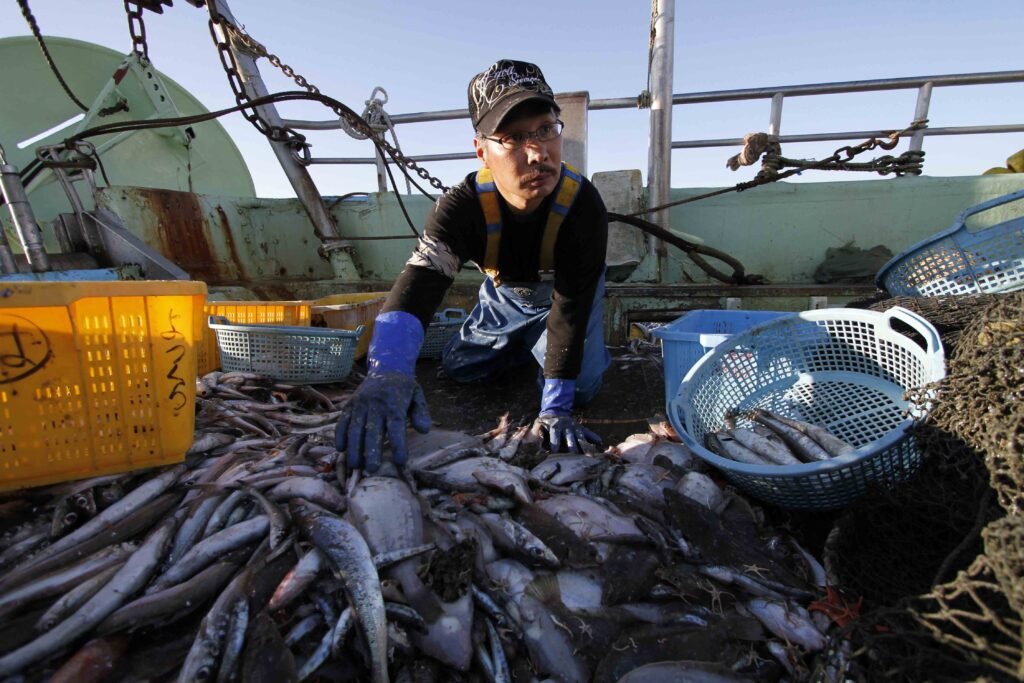Alaska’s pristine waters are not just a heaven for breathtaking natural beauty but also a source of delectable seafood cherished by seafood lovers worldwide. In the aftermath of the Fukushima nuclear disaster in 2011, concerns arose about potential radiation contamination in Pacific seafood, including Alaska’s prized catches. However, reassuring findings from extensive testing and monitoring efforts have consistently shown that Alaska seafood remains free of detectable Fukushima-related radiation.
Alaskan Seafood Safety Facts:
Alaska seafood Fukushima, radiation testing protocols adhere to stringent standards set by regulatory agencies. Testing conducted by reputable authorities like the Alaska Department of Health and Social Services has confirmed the absence of Fukushima-related radionuclides in Alaska fish and shellfish. These findings are a result of ongoing collaboration with various state, federal, and international agencies dedicated to ensuring the safety of Alaska seafood.
Rigorous Monitoring Efforts:
Alaska’s commitment to seafood safety is reflected in its rigorous monitoring efforts, which involve regular testing and collaboration with regulatory authorities like the U.S. Food and Drug Administration (FDA). Consumers seeking reassurance about Alaska seafood Fukushima radiation safety rely on the Alaska Department of Environmental Conservation’s vigilant monitoring efforts. The Alaska Department of Environmental Conservation has been actively monitoring Alaska seafood for radiation since 2014, following the Fukushima nuclear disaster in 2011.
Minimal to Nonexistent Radiation Levels:

The levels of radiation detected in Pacific seafood, including fish from Alaska waters, are minimal to nonexistent. These levels are well below any health risk thresholds established by regulatory authorities, providing consumers with confidence in the safety of Alaska seafood.
Continued Enjoyment with Peace of Mind:
With Alaska seafood consistently proving to be free of Fukushima-related radiation, consumers can continue to indulge in their favorite delicacies without contamination concerns. Whether it’s succulent salmon, flavorful halibut, or plump crab, Alaska’s bounty remains as safe and delicious as ever.
Alaska Seafood Radiation Testing Highlights:
- Since 2014, Alaska DEC has been checking seafood for radiation, partnering with the FDA and NOAA.
- DEC’s lab boasts the country’s only portable gamma-ray system for thorough testing.
- FDA methods are used to detect gamma radiation and Fukushima-related contaminants like cesium-137 and iodine-131.
- Expanded sampling includes salmon, halibut, pollock, and crab due to concerns about potential releases from Fukushima.
- Tests through April 2023 show no Fukushima-related radiation in Alaska seafood.
- DEC and other agencies confirm Alaska seafood’s safety and health, alleviating radiation worries.
- Alaska DEC ensures seafood is radiation-free, safeguarding marine life and consumer well-being.
What is the Alaska Department of Environmental Conservation’s Stance on Fukushima Radiation in Seafood?
The Alaska Department of Environmental Conservation, along with other state, federal, and international groups, has been checking Alaska seafood since 2013. So far, they haven’t found any Fukushima-related radiation in it. They say that fish and shellfish from Alaska’s waters haven’t been affected by the nuclear trouble in Japan.
The department has been watching what’s happening at the Fukushima nuclear plant and dealing with any worries about radiation in Alaska. They’ve been teaming up with other government bodies and scientists to keep an eye on the sea.
Their tests have shown that Alaskan seafood, like salmon, halibut, pollock, and crab, doesn’t contain any Fukushima-related radiation. They’re planning to keep testing Alaska seafood for this kind of radiation for at least one more year.
In short, the Alaska Department of Environmental Conservation is sure that Alaska seafood is safe to eat and doesn’t have any Fukushima-related radiation in it.
Conclusion:
Ongoing collaboration between governmental bodies and scientific institutions ensures continuous vigilance in monitoring Alaska seafood Fukushima radiation levels. These sources ensured that its seafood remains free of Fukushima-related radiation. Consumers can enjoy Alaska’s culinary treasures with confidence, knowing that stringent testing and collaboration with regulatory authorities uphold the highest standards of quality and safety. So, let’s savor the flavors of Alaska seafood guilt-free and with peace of mind.
FAQs
Is Alaskan seafood safe to eat after the Fukushima nuclear disaster?
Yes, it’s safe to eat Alaskan seafood even after the Fukushima nuclear disaster. Testing started in 2013, and since then, no radiation has been found in Alaska fish. The Alaska Department of Environmental Conservation, along with other groups, has been checking Alaskan seafood for Fukushima-related radiation, and they have yet to find any. They keep testing regularly, and because they haven’t found any radiation, they say it’s safe to eat.
How is Alaskan seafood tested for radiation?
Alaskan seafood is regularly checked for radiation using different methods. Since 2013, the Alaska Department of Environmental Conservation has been leading the testing efforts. They look for Fukushima-related substances like cesium-137 and iodine-131. The process includes gathering seafood samples, checking them for gamma radiation, and sending them to an FDA lab in Massachusetts for more tests. Also, Alaska has a special system in Anchorage for quick testing called a field deployable gamma-ray analysis system. This system lets them monitor and test seafood in real time.
What agencies are involved in monitoring the safety of Alaskan seafood?
The Alaska Department of Environmental Conservation, along with the FDA and other groups, checks if Alaskan seafood is safe. They work together to test and monitor seafood regularly to make sure it’s safe to eat.










